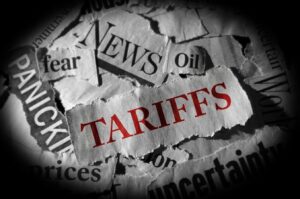Romain Pison, CEO of NoviCarbon – an entrepreneur and decarbonization expert known for his work in ESG and green infrastructure.
The transition to a low-carbon economy is accelerating, yet the regulatory landscape remains in flux. Shifting U.S. climate policies, economic pressures on Europe’s Green Deal and diverging global climate regulations create uncertainty for businesses.
Despite a policy landscape that can feel like shifting sand, I believe it’s important for companies to move forward in their decarbonization policies.
The Cost Of Waiting
With two decades of experience in green infrastructure and sustainability, I’ve seen firsthand that businesses delaying action face growing risks. These include:
• Stranded assets as fossil fuel-dependent investments become obsolete.
• Increased capital costs as investors integrate climate risk into decision-making.
• Supply chain disruptions due to shifting regulations and resource constraints.
Investor pressure is intensifying. Over $30 trillion in assets under management are now aligned with sustainability goals, with financial institutions increasingly tying capital access to climate-conscious business strategies.
At the same time, governments are advancing climate policies despite political headwinds. The European Union’s Corporate Sustainability Reporting Directive (CSRD) will require more than 50,000 companies to disclose climate-related risks—regardless of regional political changes.
How Businesses Can Decarbonize Even Amid Policy Uncertainty
Businesses can adopt a proactive decarbonization approach to mitigate risks and position themselves as leaders in the low-carbon economy. Here’s how industry leaders are making it happen:
1. Integrate climate risk into financial strategy.
I think The Task Force on Climate-related Financial Disclosures (TCFD) provides a helpful and structured approach for embedding climate risk into corporate decision-making.
One effective tool is internal carbon pricing—where companies assign a price to emissions to guide investment decisions. Businesses using shadow carbon pricing have reduced emissions by 15% to 35% while maintaining profitability, according to McKinsey.
2. Set science-based targets for emissions reduction.
A lack of policy clarity shouldn’t delay long-term climate commitments. The Science Based Targets initiative (SBTi) provides globally recognized guidelines for corporate decarbonization.
Companies with validated SBTi targets are reducing emissions at an average rate of 6.4% annually, exceeding the 4.2% required under the Paris Agreement. I believe aligning with science-based decarbonization pathways can enhance both regulatory preparedness and investor confidence.
3. Diversify energy sourcing to reduce volatility risks.
Energy market volatility poses a serious financial risk for companies reliant on fossil fuels. Businesses investing in renewable energy contracts—such as power purchase agreements (PPAs)—can stabilize energy costs while lowering emissions.
According to BloombergNEF, corporate clean energy procurement hit a record 41 gigawatts in 2023, and renewables are now cost-competitive or cheaper than fossil fuels in most markets. Therefore, securing renewable energy contracts today can help insulate your businesses from future price shocks while aligning with sustainability goals.
4. Decarbonize the supply chain.
For most companies, Scope 3 emissions—those generated by suppliers and logistics—make up 70% or more of their total carbon footprint. Best practices for supply chain decarbonization include:
• Enhancing transparency across suppliers.
• Collaborating on emissions reduction targets.
• Embedding circular economy principles in product design.
Overall, I believe a sustainable supply chain can reduce your exposure to carbon pricing and enhance long-term resilience.
5. Engage in climate policy instead of only reacting to it.
Leading companies don’t just adapt to regulations—they actively engage in shaping them. Industry alliances like the We Mean Business Coalition show how corporate collaboration fosters policy clarity.
I’ve seen how companies that proactively engage in policy discussions experience fewer regulatory surprises and faster adaptation to new climate laws. Make sure to engage in climate policy discussions to help secure long-term regulatory predictability and business stability.
6. Implement carbon accounting as a strategic asset.
Carbon accounting is no longer a compliance checkbox—it’s a key driver of investor confidence and operational efficiency.
Using standardized frameworks like the Greenhouse Gas Protocol, companies can build credibility with stakeholders and prepare for evolving regulations. Businesses with advanced carbon accounting systems reduce compliance costs by up to 40% when new policies emerge.
The Bottom Line: Why Decarbonization Can’t Wait
Regulatory uncertainty may create short-term complexity, but businesses that act now can emerge stronger and more competitive. I see companies prioritizing decarbonization as consistently achieving higher financial resilience, stronger consumer trust, investor confidence and increased operational efficiency for cost savings.
Studies consistently show that businesses with strong ESG performance outperform their peers financially. Therefore, the imperative for corporate action is clear. Whether driven by investor expectations, consumer demand or regulatory risks, decarbonization is now a core business strategy; waiting for regulatory clarity is no longer a viable strategy.
Forbes Business Council is the foremost growth and networking organization for business owners and leaders. Do I qualify?
Read the full article here











